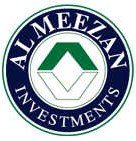| |
Pakistan is a leader in advancing initiatives for Islamic finance, and is seeing the sector grow rapidly and exponentially, said Dr Shamshad Akhtar, Governor, State Bank of Pakistan, the country's central bank.
Akhtar is also the deputy chairperson of the Islamic Financial Services Board (IFSB), the summit she was attending in Dubai.
In respect to Islamic finance, Pakistan has been "a bit of a late starter", said Akhtar, but is fast catching up. "At the pace we are growing we believe we will be able to achieve faster growth in Islamic finance in a shorter period than other countries have achieved," she said.
She emphasised that where the growth of Islamic financing in most other countries has been spread over a decade or more, Pakistan is achieving similar growth in a much shorter period. It is only in the last few years that Islamic financing in Pakistan has taken off, "but the pace at which it is growing we believe it will be a very important segment of the market", she said.
Islamic financing now constitutes about three per cent of the total banking sector, irrespective of whether it is measured by asset or deposit base, said Akhtar. This figure includes the full-fledged Islamic banks and the conventional ones with Islamic 'windows", she said. As at September 2006, these numbered six and 10 respectively. "Some of the Islamic banks we have just licensed are relatively new. Some of the old ones include Meezan. All these banks have a role in disintermediation or financing, such as home financing and trade finance," she said.
Speaking to the Pakistan Banking Association in the UK last November Akhtar said the "astounding growth of the banking sector" had stimulated and leveraged growth across the board. Total banking assets stood at Rs4 trillion, representing a threefold rise over the last five years. The ratio of banking assets to GDP grew from 47.2 per cent in 2000 to 55.6 per cent in 2005, outpacing nominal GDP, she said.
So what is the size of the Islamic financial sector right now? "We are in the midst of conceptualising this," said Akhtar, adding that "we starting to work on developing an Islamic financial strategy. The aim is to accelerate the penetration of Islamic finance in Pakistan. "We propose that this (Islamic finance) should constitute over the next five years a minimum of 10 per cent, or possibly 15 per cent of our banking system," she said.
Akhtar is confident these targets can be achieved. "What lends us confidence is our existing growth momentum, plus there are several parts of Pakistan where we could extend the outreach. Pakistan being one of the larger Muslim population, there is scope to bring in new people into financial services," she said.
The central bank is adopting a three-pronged approach to promoting Islamic banking in Pakistan. It is encouraging the establishment of full-fledged Islamic banks in the private sector and is permitting the setting up of Islamic subsidiaries by the existing commercial banks. It is also allowing existing commercial banks to set up stand-alone branches for Islamic banking.
Islamic banking will also play an important role in bringing more people into the financial system, "carrying more appeal in the remoter parts," said Akhtar.
"When you talk about financial inclusion you have to work out how to intermediate assistance at the lower end, the poor, the women, the underserved regions." Islamic finance could "carry more appeal in the remoter parts," she said.
She also says that a major micro-finance strategy has been launched in recent weeks. And because micro-finance reaches women more than anyone else, we expect micro-finance to play an important part in the empowerment of women. Said Akhtar: "The financial industry must be positioned in such a way as to give financing to women." |








